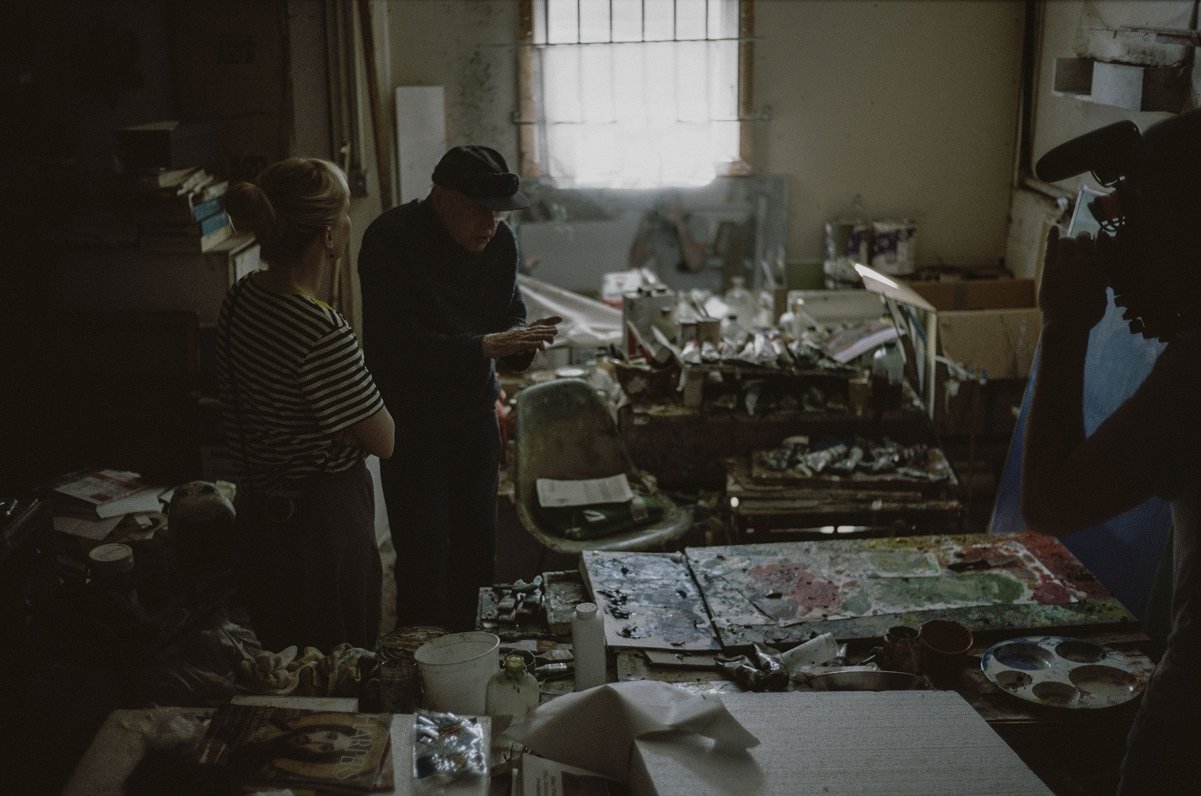As the Second World War ended, many Latvians, especially those of middle-class origin who were educated in addition to having good professional knowledge and cultural talents, found themselves forced outside their native country. 120,000 in total fled Soviet occupation. They ended up in Germany, Austria, Denmark and Sweden, and teenage Staprāns was one of those who ended up in a German displaced person's camp before going on to the United States.
Initially, American politicians had reservations over admitting the displaced. However, after pressure from different ethnic groups, particularly Jews, Poles and Lithuanians, as well as religious groups, policies started shifting. On June 25, 1948 President Harry Truman signed the Displaced Persons Act that would see 200,000 displaced persons admitted.
Working in a factory during the afternoon, Staprāns would paint and write plays in the morning as to not go crazy, according the the artist. The Latvian diaspora tended to cluster together after arriving in America to support each other and uphold their culture, so it's no surprise that Saprāns ended up in the same community as the famous writer Eglītis. Eglītis was even housed in his mother's home for a time, where he painted and wrote.
“I wonder why those Kremlin throat-rippers didn't paint!,” said Eglītis.
“They didn't have time, they had to think about how to torture people,” replied his wife.
“It's too bad that Eisenhower and Churchill painted only in the realist style,” said Eglītis.
“Well, to think of something abstract more brains are required,” once again replied his wife.
Eglītis was never quite accepted into the diaspora society, and Staprāns said he had a similarly ironic viewpoint. “Once you're traumatized, you're not the person anymore that you were, and then you try to preserve something from the past. And that's tragicomical,” explained Saprāns.
“It's usually considered that my really old novels - “Wife Hunters” and “Homo Novus” are the best ones. I think that the best ones are the last ones,” said Eglītis.
As previously reported in 2018, Homo Novus, a film based on Anšlavs Eglītis’ eponymous novel, was one of the hit films of Latvia's centenary, a cross between comedy and Bildungsroman, which has audiences waxing lyrical about 1930s Latvia.
It gives a vivid depiction of rivalry in love and art among the bohemian crowd of 1930s Riga and is also notable among Latvia's literary canon for being extremely funny, a quality that has helped it find a new, modern audience.
A fragment of romance from the Raimonds Staprāns' youth, in his own words:
Maybe because the only art gallery ready to hold my first art exhibit was in Salem. I worked the afternoon shift at a factory, painted in the mornings. Once in a while I was visited by the hospital doctor's sixteen year old daughter from England living next door. When she would finish high school, she would study art. Really? She wanted to see how that painting happens. One evening with her parent's car she took me to the darkest corner of the hospital yard and said without introduction:
“Do something! For God's sake, do something!“
I felt like a fool. Whatever I was thinking in my mind, she was only sixteen. I could get into trouble. On the way home we didn't speak. Since that time she didn't visit me as often anymore.
In my freetime I taught artist-writer Janelsiņa to drive a car. In one moment she drove up to the driveway and stopped:
“May I kiss you?“
“You may.“
Next time even more. I was twenty-four, She was forty. I was avoidant. After a few days she visited me in the studio:
“I'll show you how to really paint,” and she sat down in my place with a brush in hand.
“Do you also teach Anšlavs?” I couldn't think of anything more sensible at that moment.
“Can't you see yourself that he, the boy, has no talent! Well that's why!” And she, quickly demonstrating with oil, sketched me one of her “little heads”.
“See that's how you properly approach painting.” It was a sweltering July day and Veronica with her forty years looked better than the majority of thirty-year-olds. Could that be called fragments of romance?
The painted sketch is still in my repository today.
The “Literatūre” show has returned to Latvian Television for eight more episodes where Marta Selecka and Gustavs Terzens travel the world of literature meeting with lierary figures of past and present. The show is available to watch online on the Re:Play streaming service.





























